Cuba, Part II
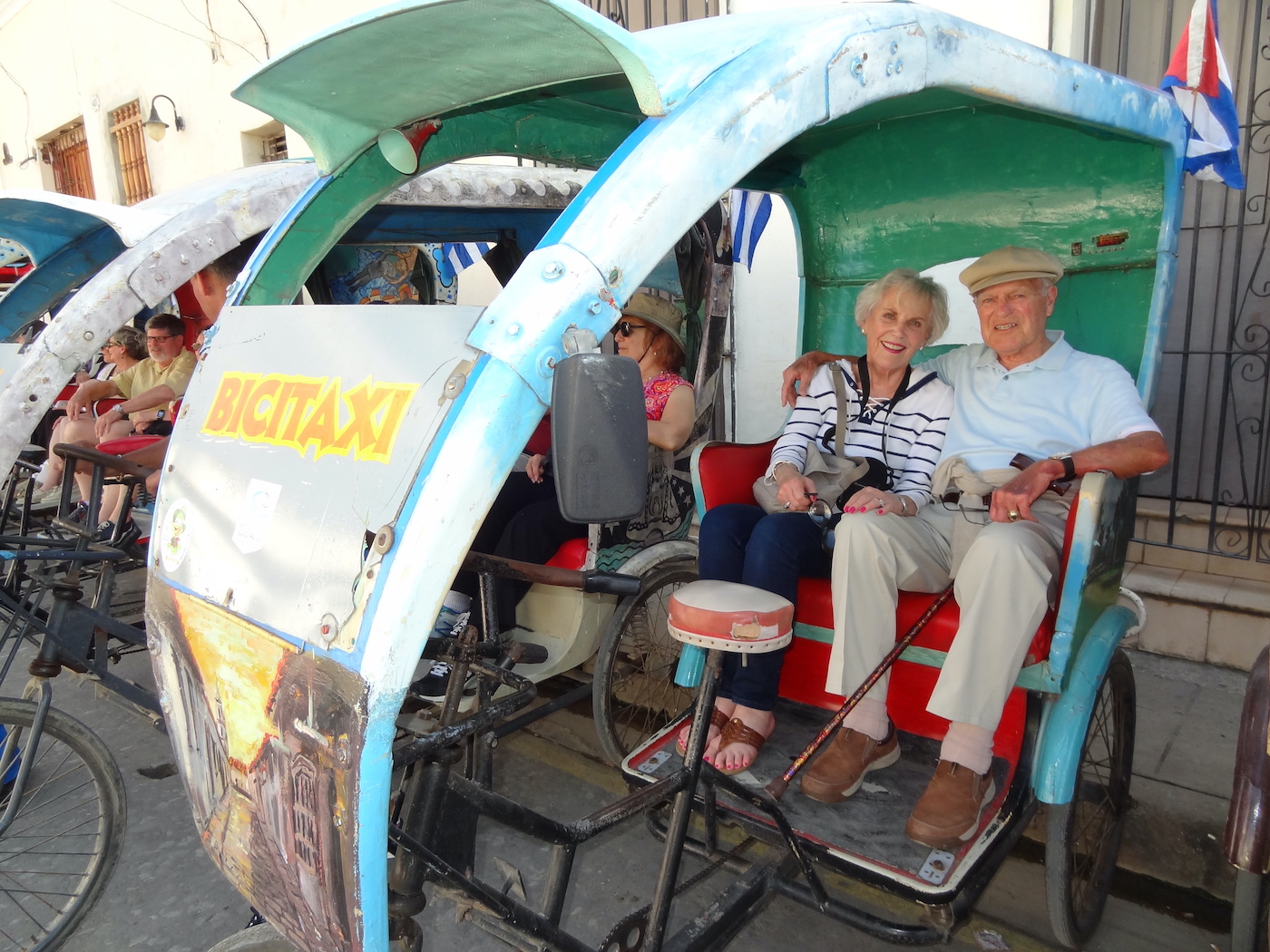
We flew from Miami to the eastern edge of Cuba to Holguin and transferred by bus to Santiago de Cuba, one of the first European settlements in Cuba dating to 1514. It is said that all wars started in Santiago and ended there. A poet, essayist, and revolutionary, one of Cuba’s heroes is Jose Marti, who died in 1895 and is buried in a mausoleum in Santiago.
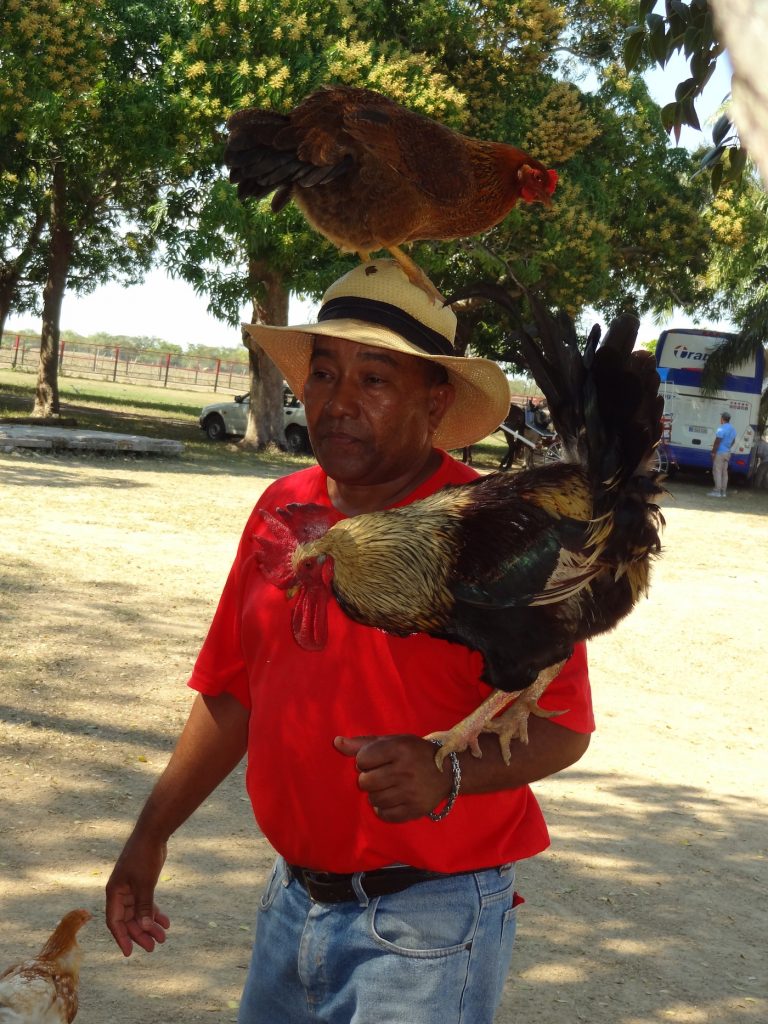
Fidel Castro launched his revolution from Santiago and is buried in the same cemetery as Marti. Fidel didn’t want a fancy memorial, so it’s a giant boulder with a single plaque that says, “Fidel.” His ashes are underneath and a color guard of soldiers marches around every half hour. That evening, we went to a club to hear and dance to music such as the Buena Vista Social Club. There is also much music played in the streets in many of the towns.
Our next stop was in the old copper mining town of El Cobre. Many pilgrimages are made to the church holding Cuba’s patron saint, Our Lady of Charity of El Cobre. Castro didn’t believe in Church, but his mother liked this saint and so he did too. Ernest Hemingway even left his gold Nobel Prize for Literature medal for Old Man and the Sea as a gift to the church,ß where it’s still on display. People who have prayed to Our Lady and gotten well have left their crutches and paraphernalia in thanks.
In Bayamo, a sugar plantation town, we took a horse carriage ride through the restored historic district. A mode of transportation for the local residents is trucks turned into buses, and they are jammed inside. Then on to a resort in Holguin at the beach. It was an all-inclusive club with a bar open 24 hours a day. You could eat and drink to your hearts content. We treated ourselves to Irish coffee and cappuccino often and had lobster one night. In town, we saw a puppet show in black light that the kids would love — a live version of Finding Nemo.
The next morning, our bus headed for Carnaguey. It is said that the twists and turns of the labyrinthine old city center, which is now a UNESCO World Heritage Site, was built that way to confuse the pirates. We were confused, but privateer Henry Morgan managed to loot and pillage. After lunch in a charming restaurant overlooking the square, we had a ride in a bici-taxi, which is a pedal-powered rickshaw. Carnaguey is known for its 24 churches; 15 are Catholic and for their large pottery jugs that collect water.
I used to live in Kingsville, Texas, named after the nearby King Ranch, where they bred Santa Gertrudis cattle. I never knew they had another ranch in Cuba. Although the family had to flee their 40,000 acres during the revolution, the ranch is still there under government control. Cuban cowboys put on a short rodeo with calf roping and bucking broncs followed by a barbecued pork lunch. The pig had been cooked over a pit fire, and all that charred fat was delicious. The foreman said their ranching operation was hindered by a shortage of barbed wire and workers.
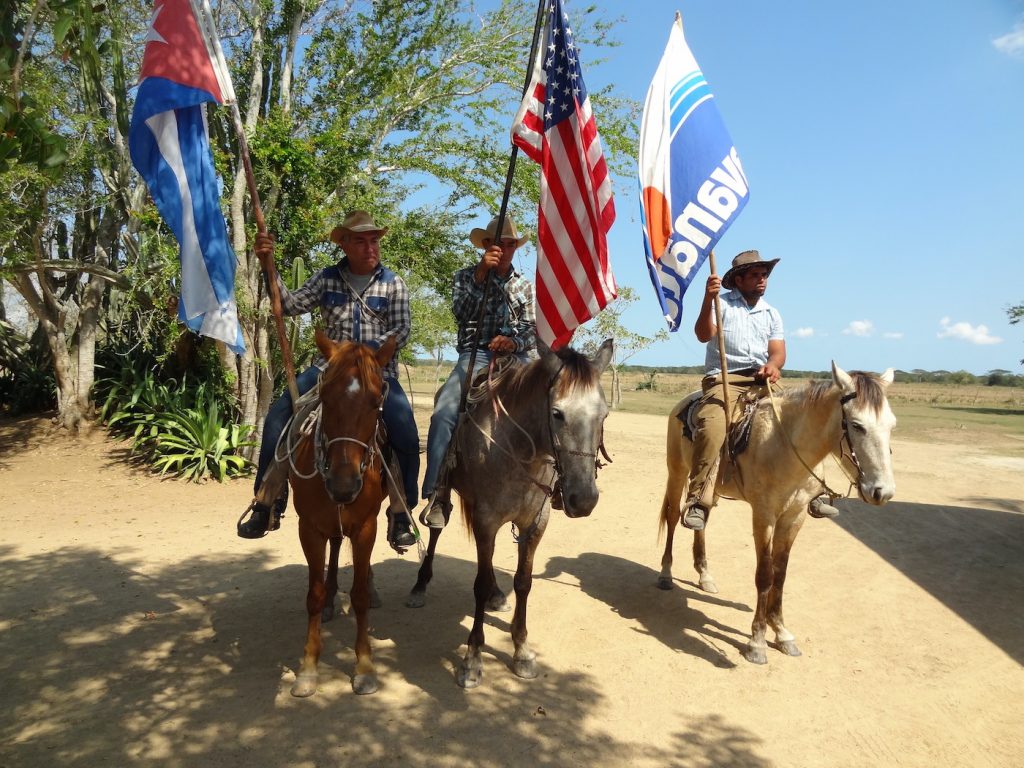
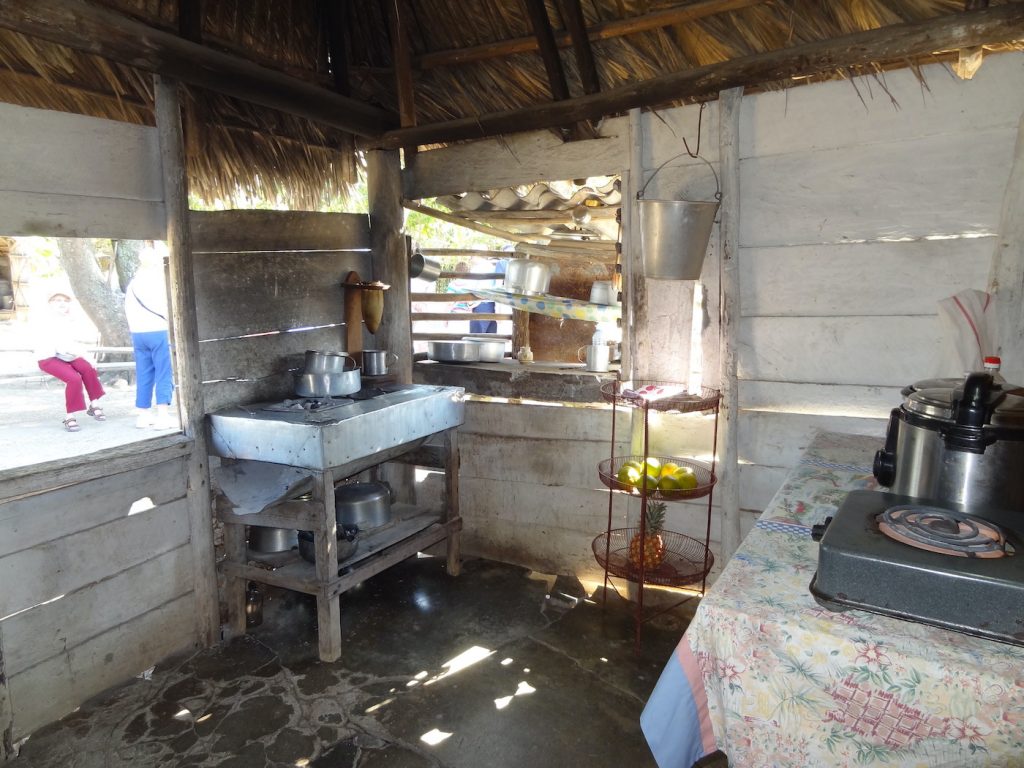
They took us in horse-drawn carts to a nearby village, where we saw their school and some of their homes. One dilapidated house had a modern refrigerator, and the owner said it was the only one for miles around but she had an outhouse out back.
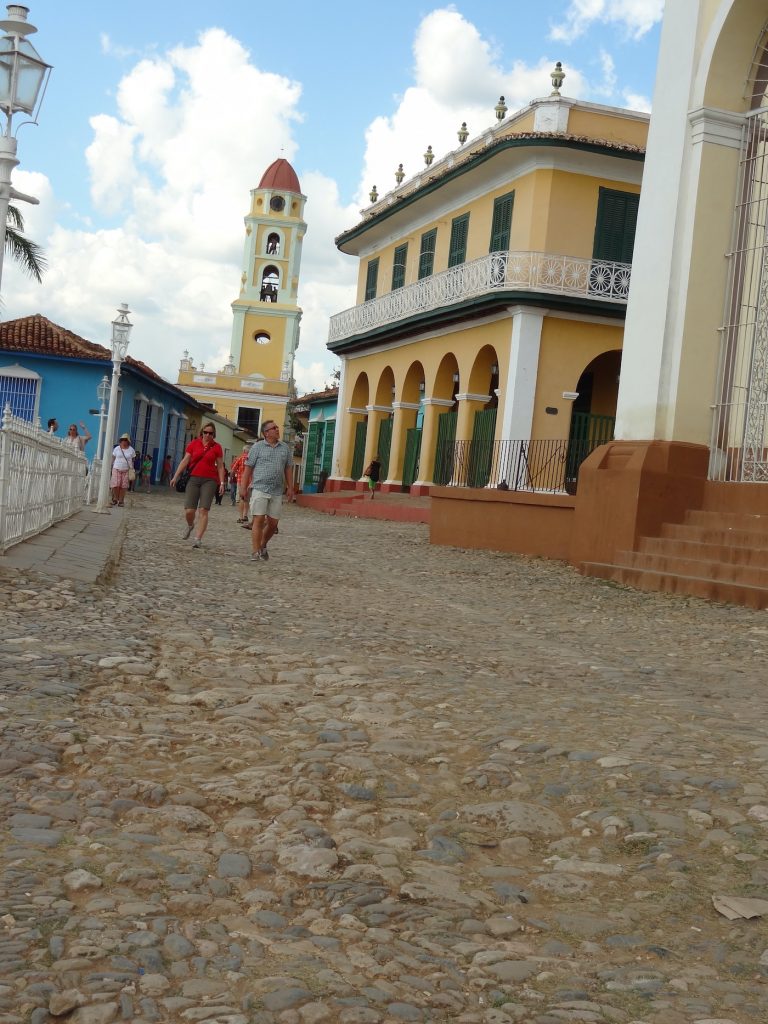
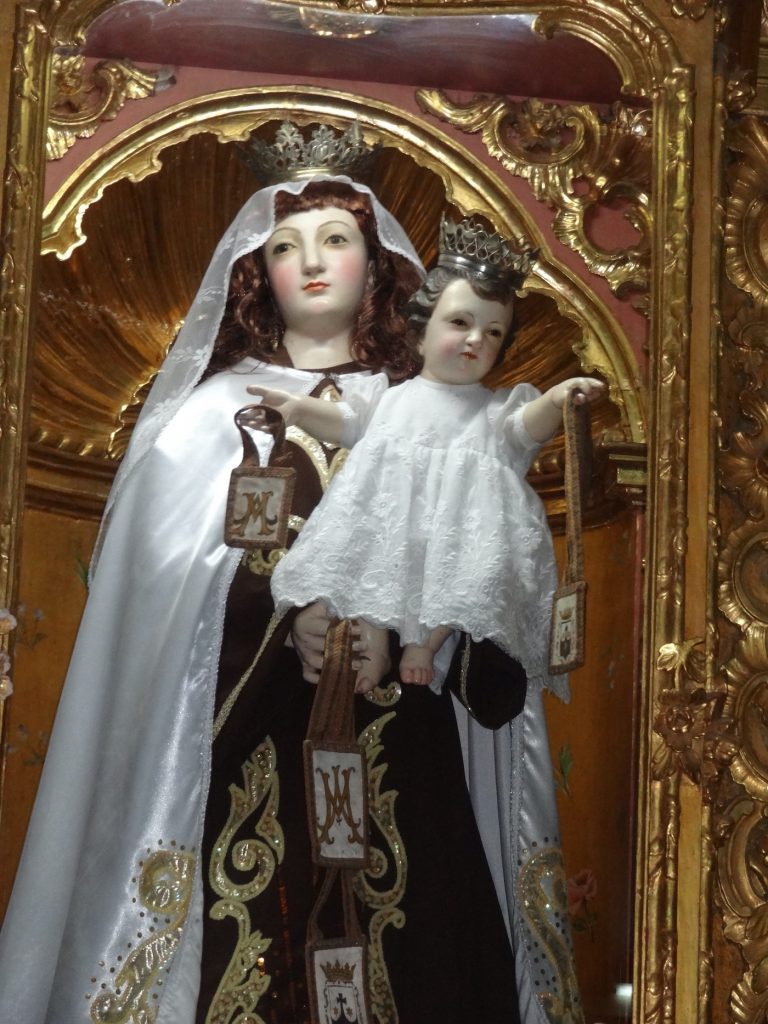
Next on our westward journey was Trinidad, a beautifully preserved colonial city. It has a UNESCO designation, handsome architecture, the most cobbled streets I’ve ever walked on (rocks of all sizes and shapes), stately palaces, and neat plazas. Trinidad is often called the “museum city of Cuba” because it is so well-preserved. There is also a thriving arts scene.
Next was the town of Remedios (“remedy”) boasting the oldest church in Cuba. It holds one of the only eight pregnant virgin statues in the world. We were supposed to board a train with a steam locomotive engine for a ride to the Sugar Museum. Don’s a train nut, so he was doubly disappointed to learn that they had had no fuel for about 15 days. The train couldn’t run. Socialism at work!
The museum guide told us that if any new equipment comes along, it goes to the farms that are the highest producers. In the old days, slaves were inhumanly used for the sugar harvest. Today, there might be 300 workers in four different shifts from December to April. In going through the museum, we learned the sugar process sometimes gold “white gold.” There are only 56 sugar mills left in Cuba and they have to import some sugar.
On to another all-inclusive resort, where the champagne flowed day and night. This was on the pristine island of Cayo Santa Maria, connected to the coast by a causeway linking a series of keys. I just kept thinking: “If we go off the road, we’re going to need life jackets.”
As we were heading to Havana – holy cow, we hit a cow! The farmer opened a gate right by the road and the cow ran into our bus. Thank goodness it didn’t have horns, or he would have put a hole in the tire. The cow fell down but got up and walked away. The bus driver said a few Hail Marys, because you can go to jail for killing a cow in Cuba even if it’s the cow’s fault.
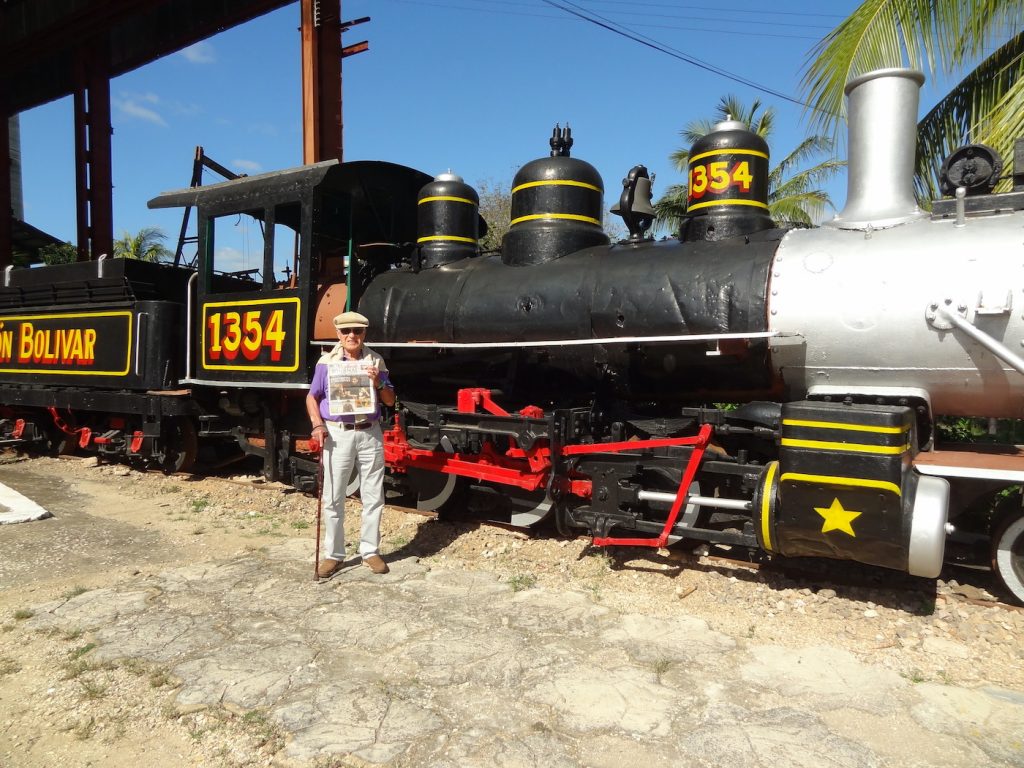
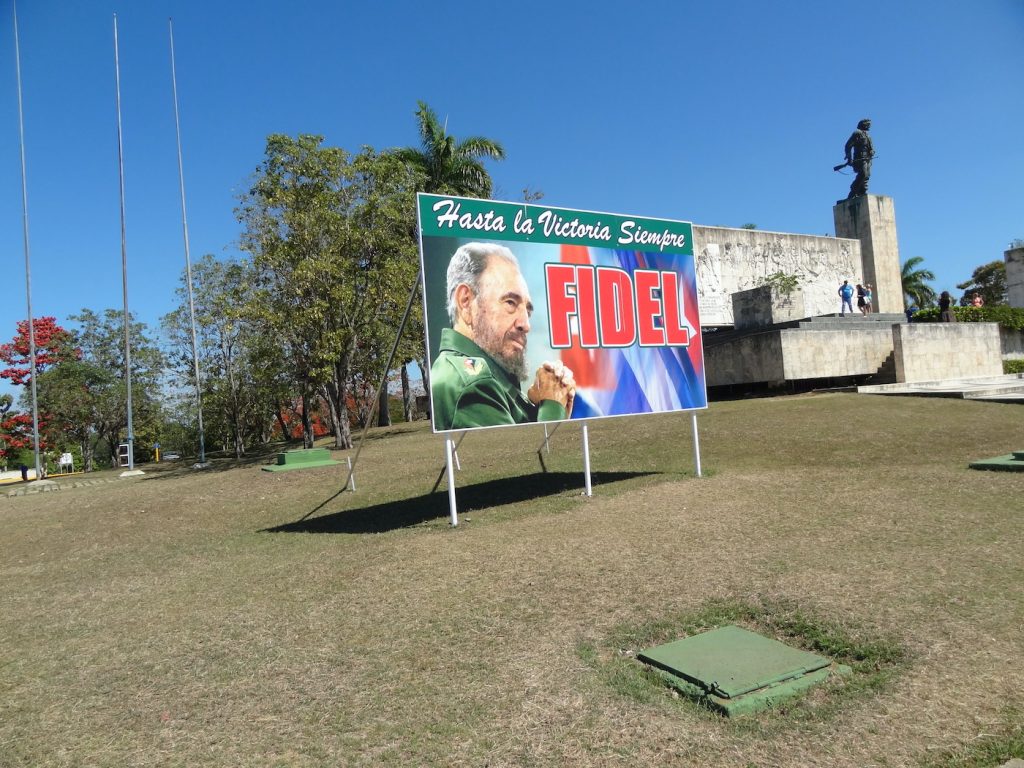
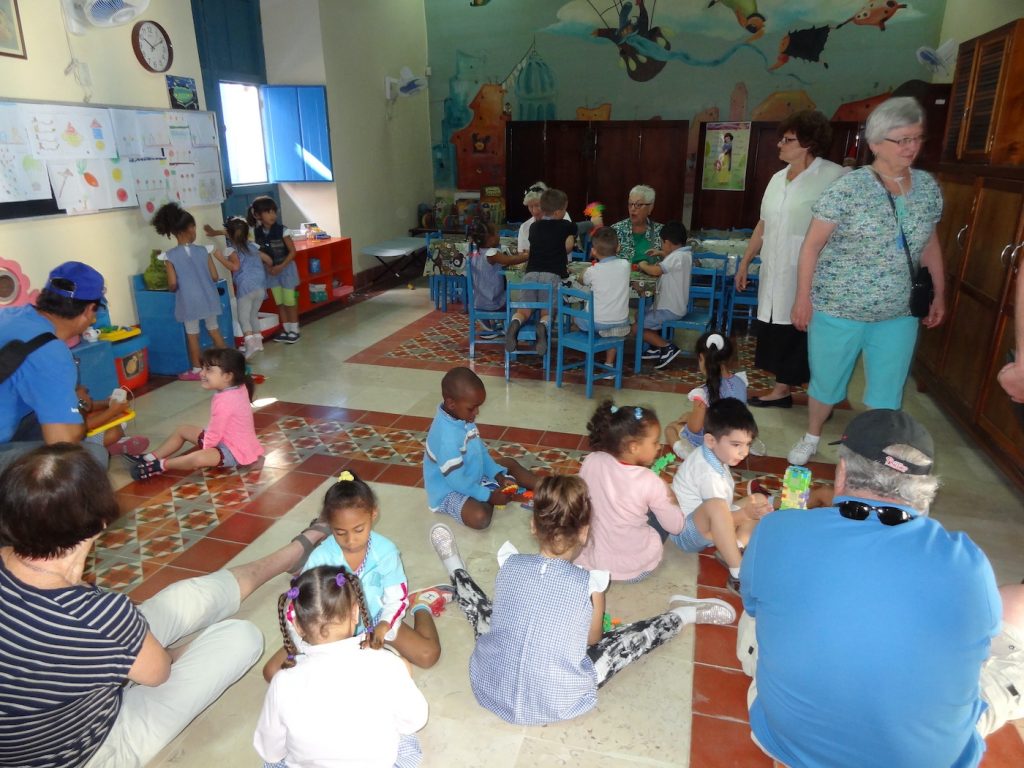
Just before Havana, we stopped in Santa Clara to visit the mausoleum dedicated to Che Guevara. It was the site of a decisive 1958 battle of the revolution when troops under Che took the city. Che was executed at age 39 in Bolivia for promoting another revolution and put in a mass grave. Eventually, they checked DNA to find his body and reinterred him. In contrast to Castro’s simple grave, Che has a monumental monument.
Havana is always memorable because of San Felipe Castle, the fortress built to protect the city from sea raiders. Then there is the malecon, the famous sea wall that protects the city. We visited the Sister Teresa Vaz center for the preschool children of working mothers. Our tour group had all brought things for the kids including toothbrushes and toothpaste. They need everything. The nun who runs it had to leave Cuba for about 20 years. When politics became more liberal, she came back and started over again. She’s so tiny but mighty. Today, the churches are open and having services.
We had a walking tour of Old Havana going to the four main squares, including the restored Plaza de Armas and the Plaza de Catedral. But it’s so depressing to see so many buildings that looked like they had been bombed, when in fact, they are just disintegrating from age and no maintenance. I don’t see how they’ll ever catch up with restorations. Then there is the huge Plaza de la Revolucion where Fidel addressed rallies and where Pope Francis recently spoke to tens of thousands.
You can’t visit Havana without going to a cigar factory. This one produced 20,000 cigars a day. They are all rolled by hand, mostly by women who can make 120 per day. They ran a cigar school, which required attendance for nine months to graduate. The scraps of tobacco leaves that were left on the table were put into cigarettes. There are 60 brands of cigars in Cuba and the factories all belong to the government. Now there is no limit on how many cigars you can bring back to the states.
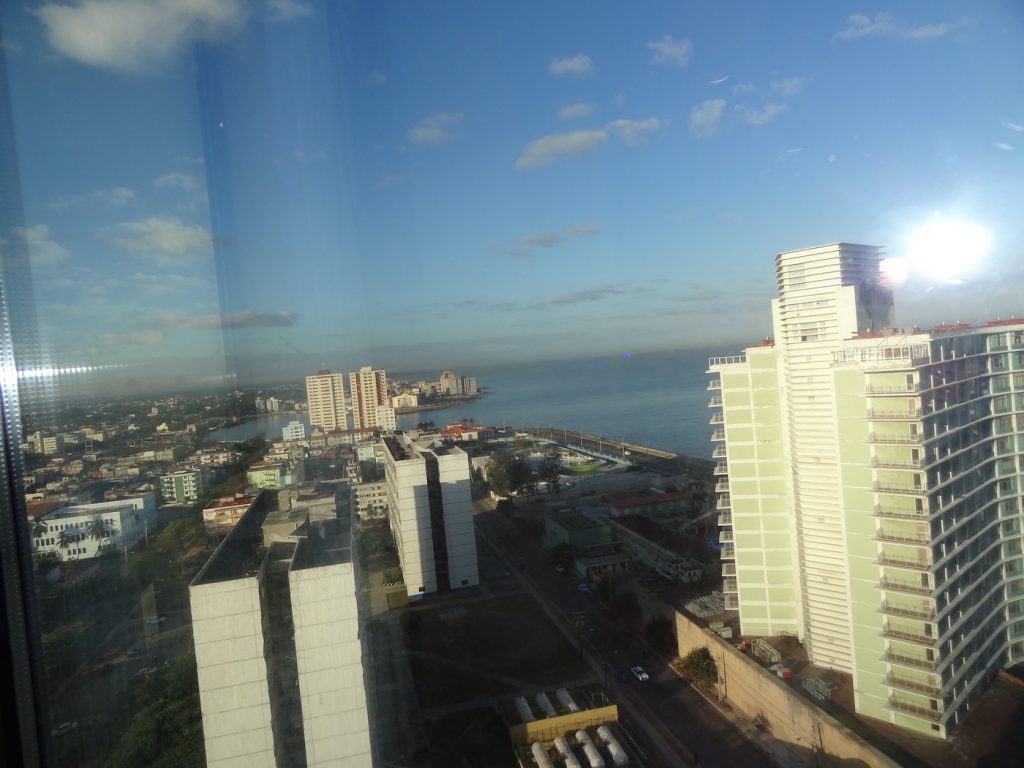
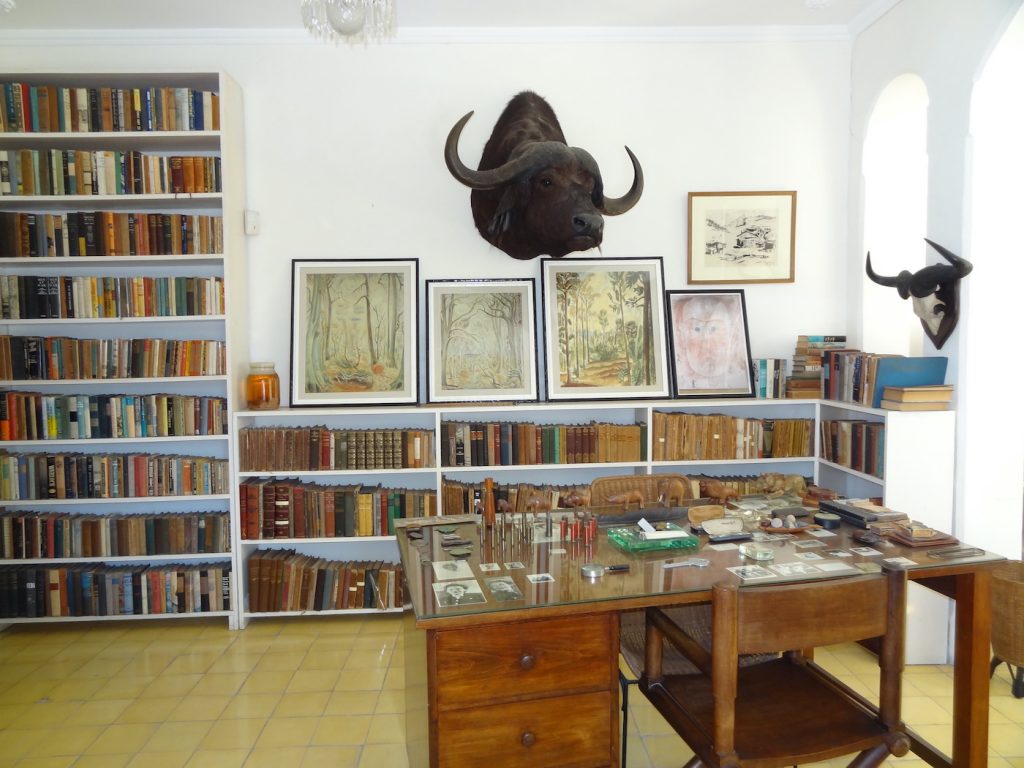
A must-see is Ernest Hemingway’s home just out side of Havana. The previous time we went, there was hardly anyone there. This time, we had to stand in lines to see in the windows of his home. No one goes in, but there are windows all around with all his original furniture, books, typewriter, and even clothes and shoes on display. He bought the property in 1939 and worked on The Old Man and the Sea and For Whom the Bell Tolls while there. The simple home stands on several acres and is quite bucolic.
In our 2002 trip, our Cuban guide from Miami told us about her mom had been a flight attendant and Hemingway was frequently on her flight. She didn’t like him because he had dirty feet and wore sandals. Her dad was a pilot and flew Batista out of Cuba when he went into exile.
The old National Hotel is a must-see. They charge you just to walk through, but it’s where all the celebrities stay and there’s a wall of fame with photos. They are also known for their Cuban sandwich, but we had three in Cuba and liked theirs least. What is a Cuban sandwich? Ham, cheese on bread done panini-style.
Probably the most famous nightclub in the world is the Tropicana in Havana. It was going strong when we went in 2002 and still is. It is located outdoors on 25 acres and was a private estate at one time. It now has multiple stages and stadium seating. We were told the show even went on during the revolution. My husband, Don, was remembering bare-breasted beauties, but his memory failed. There were beautiful costumes, though.
We also remembered that included in the $100 price tag was a full bottle of rum for the two of us. There still is. It harks back to when Havana was the glamorous gambling capitol of the world in the 1950s.
So, what happens next? For now, it’s more of the same. American cruise ships will be docking in Havana and a Hollywood movie is scheduled to be filmed there. By the time this is published, there will have been a music festival bringing Cuban and American musicians together in a public concert. Or as former president Barack Obama said, “The future of Cuba must be in the hands of the Cuban people.”
“I haven’t been everywhere, but it’s on my list.” – Susan Sontag







You must be logged in to post a comment.